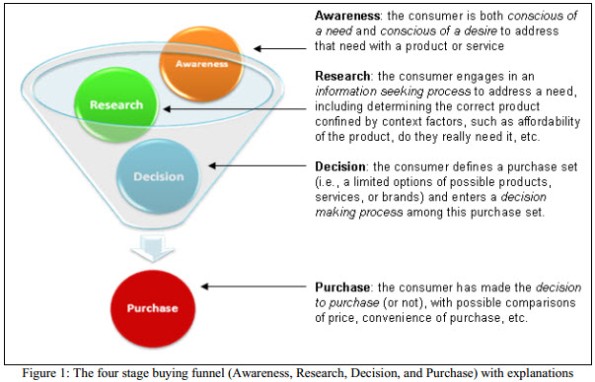Search Queries and User Intent
Search engines have evolved and are getting smarter at providing search results based on user intent. Understanding your brand and how the different keywords and queries that searches use to find your site and products can help you with everything from developing keyword silo’s for organic search, creating paid search bid optimization strategies, creating a paid search campaign hierarchy, developing site content strategy.
There have been a lot of studies dissecting search query information to gain further insight into user intent. The fundamentals from each research study identified between three to five main ways to categorize user intent.
Types of search queries based on User Intent
- Informational
- Navigational
- Transactional
- Multimedia
Below are links to a handful of the core studies. Feel free to read up and learn more about the research done to come up with the various classifications of search queries and how they can be tied to each category.
- A taxonomy of web Search, by Andrel Broder
- Determining User Intent of Web Search Queries, by Jansen, Booth, and Spink
- Classifying Web Queries by Topic and User Intent, by Jansen and Spink
Breakdown of Query Intent
- Informational queries: The user wants to obtain information, such as the weather forecast, phone number for a company, to an actors filmography.
This type of query can be satisfied through articles, images, videos, infographics and other media that offers a good balance between information, entertainment, education, and inspiration.
- Navigational queries: The user wants to find a specific website. These are typically brand focused queries.
- Transactional queries: The user wants to perform an action, like sign up for a newsletter, compare products during purchase research, or purchase an item.
Transactional queries can also be segmented into two types of intent: intent to research (pre-transaction) and intent to purchase.
Segmenting by intent to research can be valuable if you can gain interest and engagement. Any opportunity to add multiple touch points to the relationship can provide future conversion opportunities. A good way to do this is by offering free information through email subscription, polls, surveys, feed subscriptions, product comparisons, or a series of specialized articles.
For most companies the queries for purchase intent are the most valuable, competitive, and the easiest to lose if you don’t provide a simple and easy way to convert. On-site engagement, uncomplicated conversion funnels, and obvious next steps all contribute to intent satisfaction.
Look at the keywords and the search queries that drive traffic to your site. All websites have a mix of each type of search queries. In my SEO campaigns I consider it a success when my site optimizations move the needle of search query mix from Brand related search queries (Navigational) driving the majority of traffic to my site to have a blend of traffic and search volume from Informational and Transactional queries. Increasing the mix of informational and transactional queries means that I am building up my sales funnel and reaching users across each stage of purchase intent.
Evaluating your Search Query Mix to build your Sales Funnel
When I came to Harry & David in the summer I used our web analytics data to look at the mix of search queries, both paid and organic, to determine our strengths and weaknesses of our search query mix. I found that a significant portion of our organic traffic came from branded queries whereas paid search focused across informational and transactional queries. Our largest opportunity for growth could be gained by diversifying our search portfolio by expanding into more informational and transactional queries to build up our sales funnel. Once you know the differences between your paid search and organic search campaigns, you can start optimizing your campaigns accordingly.
As you start to evaluate your website and your SEO / SEM strategies here are a few questions for you to think about:
What is the mix between informational, navigational, and transactional queries for your website?
Does more than 50% of your search traffic come from branded search queries?
Do consumers find you online for queries and keywords related to your lines of business? Are there specific elements of your business that are under represented in the search query mix?
Are you building up your sales funnel by targeting users across multiple stages of purchase intent?
Which segments of search queries does your business need to develop and expand?
What queries are you ranking for within on the top page of the search engine results?
How does your search query mix across each of the categories of user intent compare to your core competitors?
What are the differences between the mix of search queries from organic and paid search traffic?
Is your paid search campaign cannibalizing your organic search traffic for branded queries?
-
June 25, 2019 at 7:06 am17 facts about search psychology that marketers should know - GET LEADING










